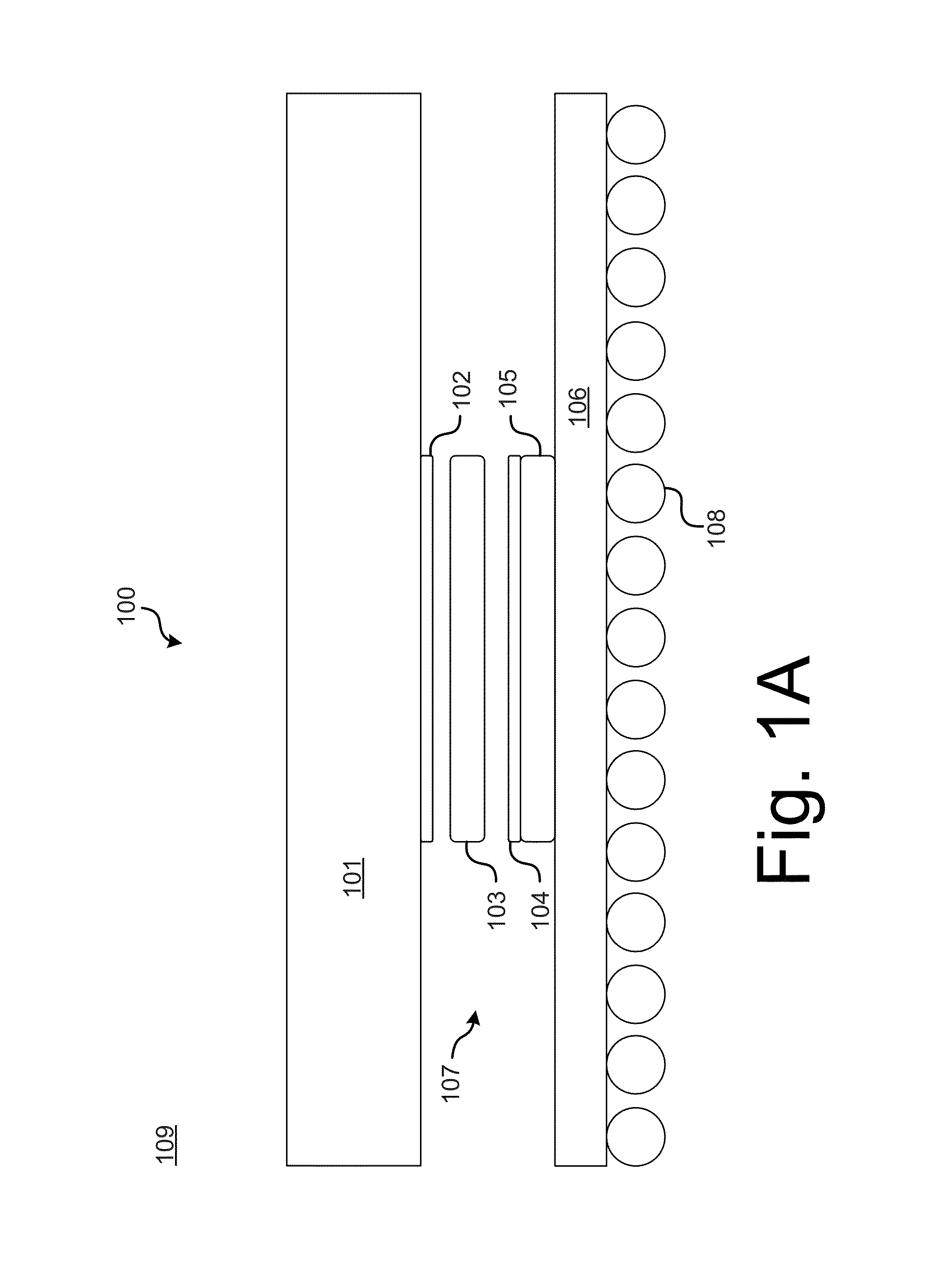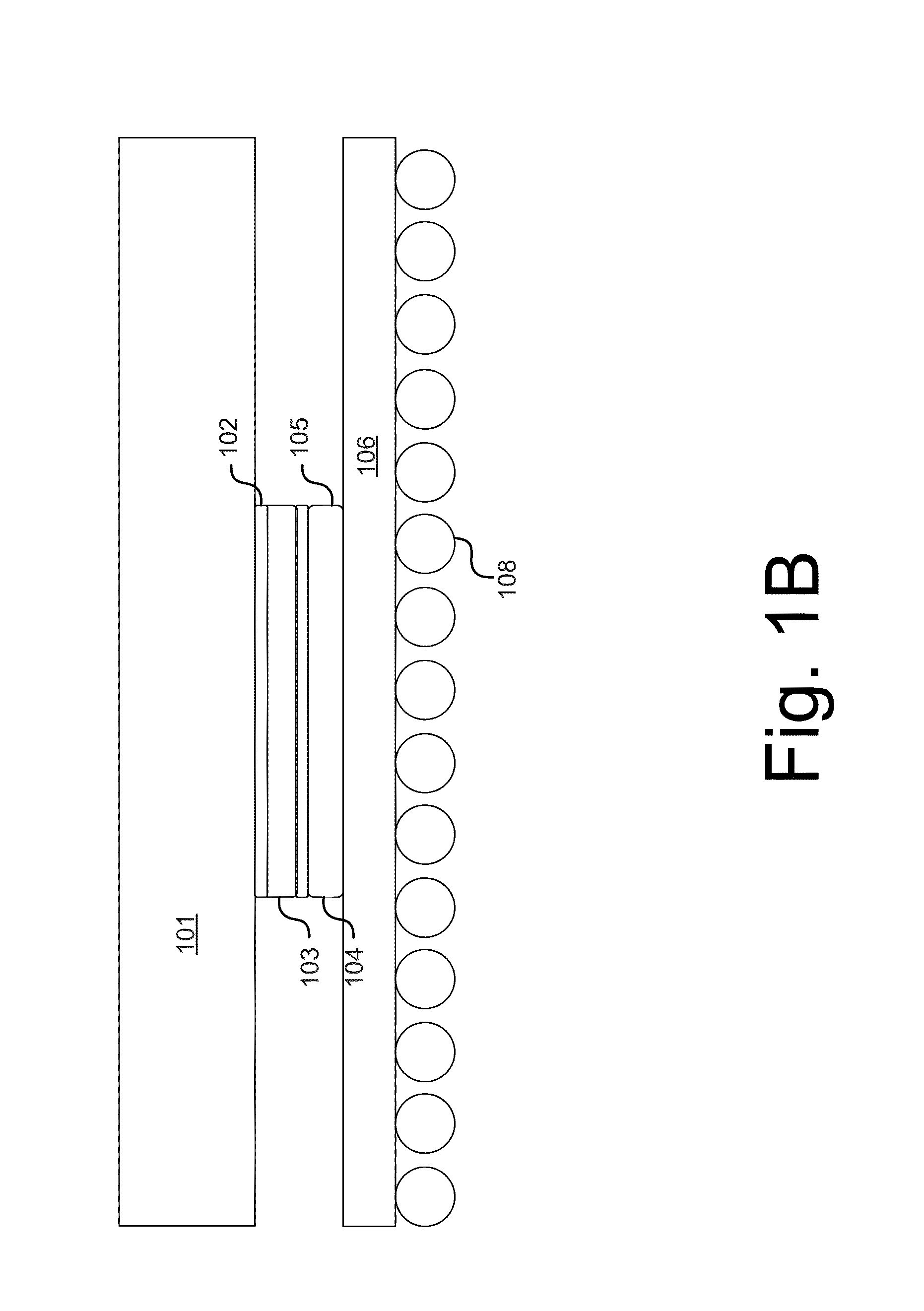Low void solder joint for multiple reflow applications
a solder joint and low void technology, applied in the field of low void solder joints for multiple reflow applications, can solve the problems of limiting the capacity of removing heat, the upper limit of these approaches is 5 w/m-k conductivity, and becoming a liability, so as to reduce the melting point and facilitate the spread of wetted surfaces
- Summary
- Abstract
- Description
- Claims
- Application Information
AI Technical Summary
Benefits of technology
Problems solved by technology
Method used
Image
Examples
Embodiment Construction
[0017]Embodiments of the technology disclosed herein use fluxless soldering in an in-line oven, which forms a robust solder thermal interface capable of remaining essentially void-free through multiple reflow cycles. This technology can use a sacrificial silver metallization rather than gold. The result is a solder joint bonded directly to the underlying nickel without the brittle layer of an In2Au intermetallic compound.
[0018]The combination of formic acid fluxless soldering and the use of silver as the metallization enable this process. Silver forms a eutectic alloy with indium at a level of 3% indium. When liquid indium from the solder TIM contacts the silver it immediately wets and quickly dissolves the silver. In this application, the leaching of the silver allows the indium to solder to the underlying nickel. The In—Ni solder joint is very stable with a slow-growing intermetallic layer.
[0019]This type of reaction also occurs in the gold metallized interface; except that indium...
PUM
| Property | Measurement | Unit |
|---|---|---|
| melting point | aaaaa | aaaaa |
| melting point | aaaaa | aaaaa |
| melting temperatures | aaaaa | aaaaa |
Abstract
Description
Claims
Application Information
 Login to View More
Login to View More - R&D
- Intellectual Property
- Life Sciences
- Materials
- Tech Scout
- Unparalleled Data Quality
- Higher Quality Content
- 60% Fewer Hallucinations
Browse by: Latest US Patents, China's latest patents, Technical Efficacy Thesaurus, Application Domain, Technology Topic, Popular Technical Reports.
© 2025 PatSnap. All rights reserved.Legal|Privacy policy|Modern Slavery Act Transparency Statement|Sitemap|About US| Contact US: help@patsnap.com



